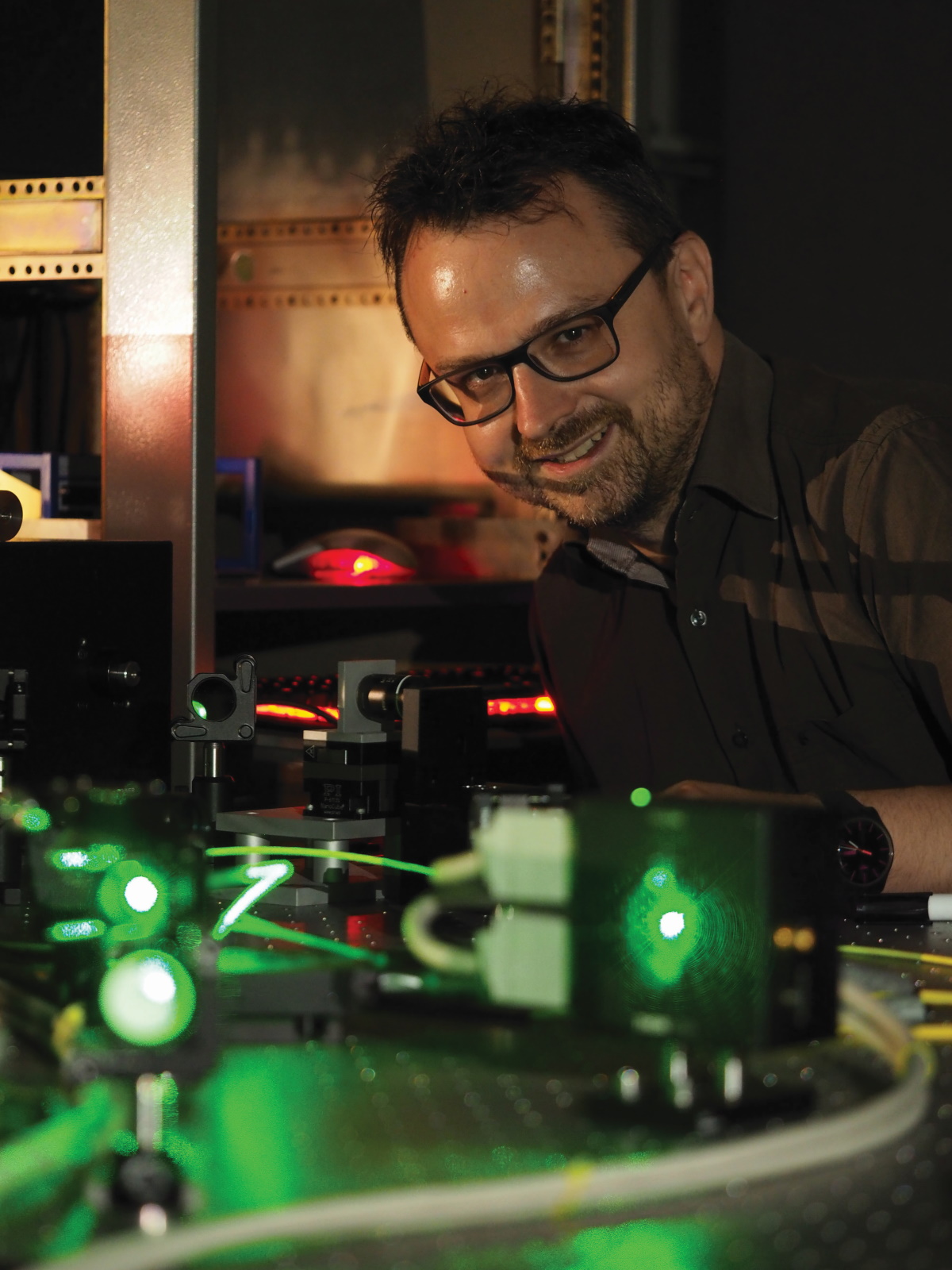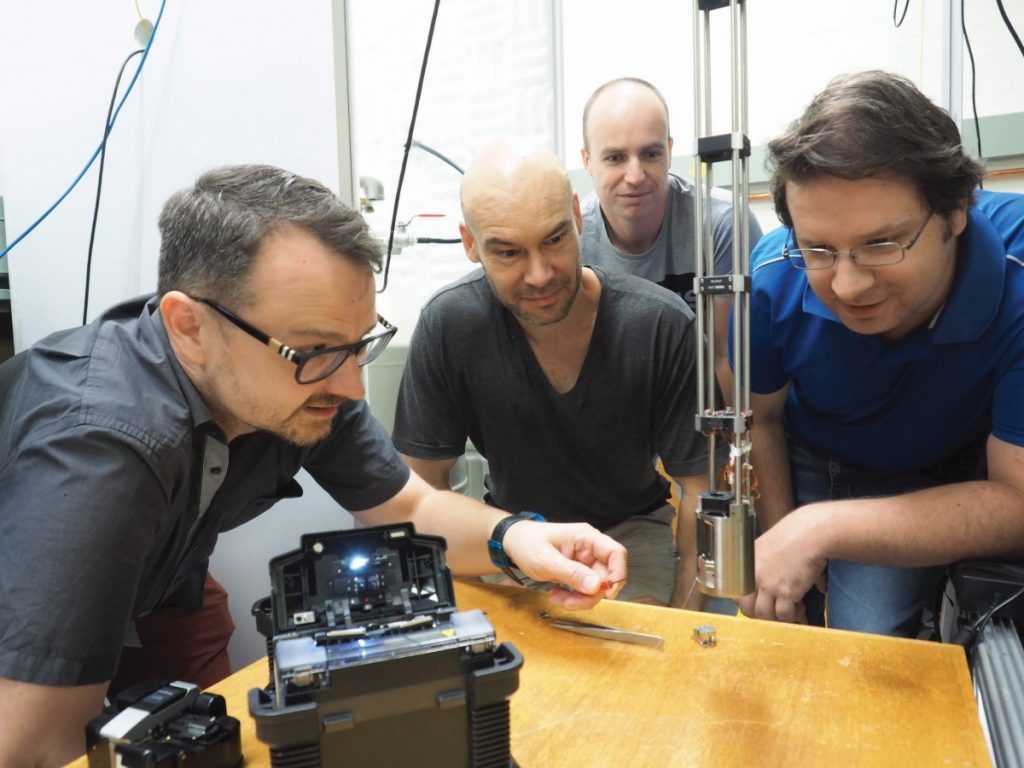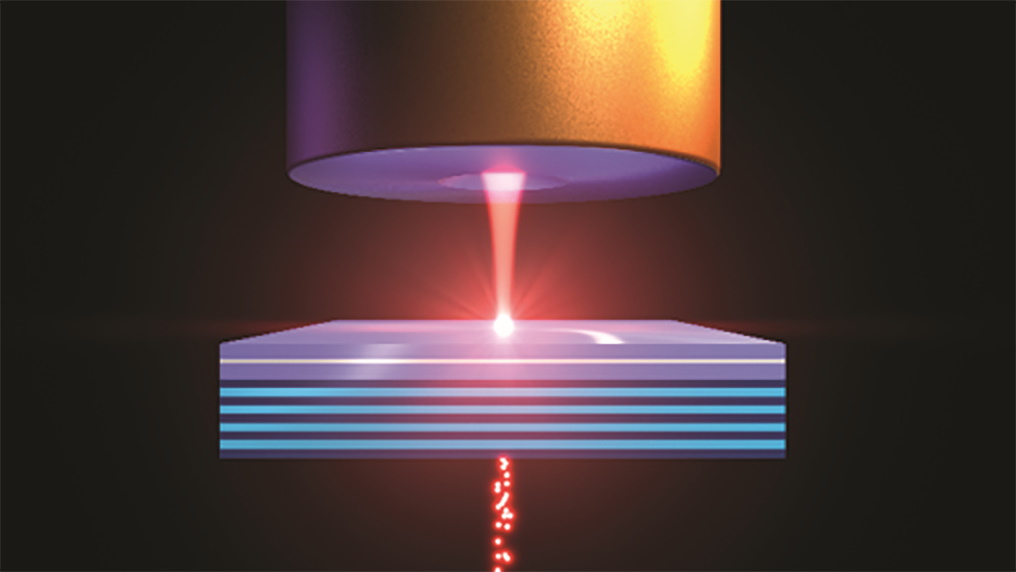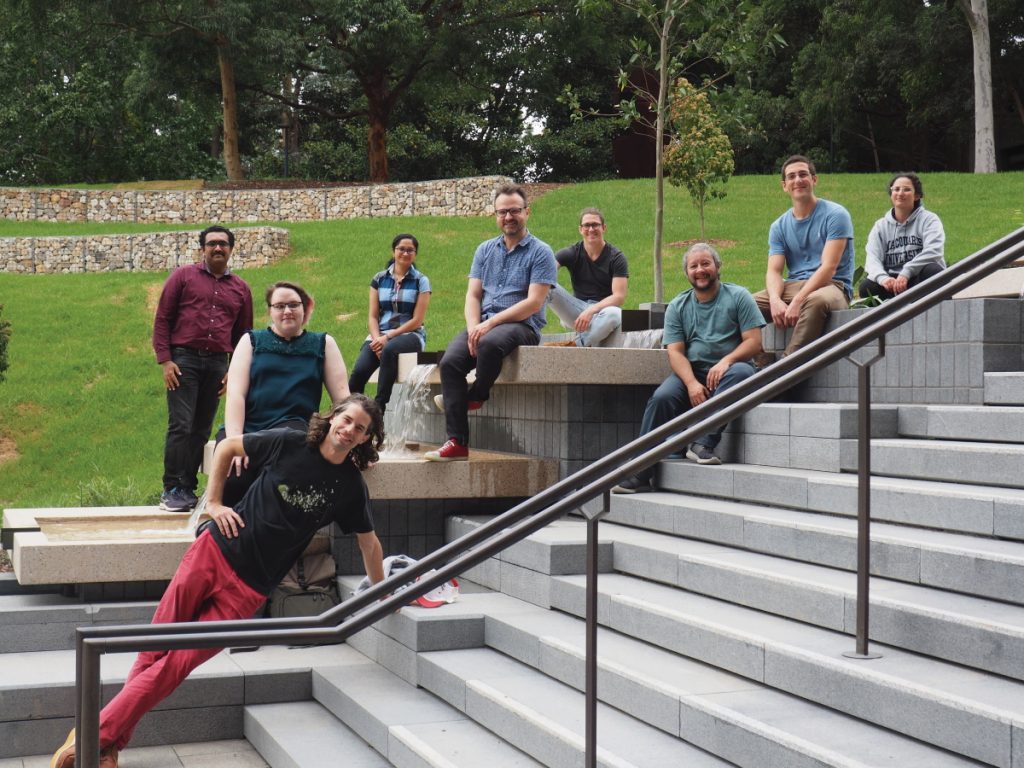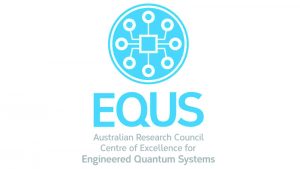Lighting up the quantum future: from basic quantum science to new technologies
Dr Thomas Volz, based at Macquarie University in Sydney, Australia, uses quantum optics tools and methods to identify materials that will help scientists develop new quantum technologies that can change the world in almost unimaginable ways
TALK LIKE A QUANTUM SCIENTIST
PHOTONS – the fundamental particles or quanta of light. They have unique properties in that they behave both as a particle and as a wave
NANODIAMONDS – diamonds that are below 1,000 nanometres (=1 micrometre) in size. They can be produced quickly by impact events such as explosions, or slowly in a microwave oven using a process that grows them atom by atom. These nanodiamonds possess fascinating mechanical, chemical, optical and biological properties
POLARITONS – hybrid particles made up of a photon strongly coupled to an electric dipole, e.g. of an atom or an excitation in a solid. A hallmark signature of polaritons is the occurrence of the phenomenon known as level repulsion or avoided crossing
SPIN – Classically, spin denotes a self-rotating object (think of a gyroscope). In quantum physics, spin is an intrinsic form of angular momentum carried by elementary particles, composite particles and atomic nuclei
SPECTROMETER – a device for detecting and analysing wavelengths of light over a wide range of the electromagnetic spectrum. It is a tool commonly used not only by quantum physicists but also by astronomers, for example, to gather information about the chemical composition, temperature, density, mass, distance, luminosity and motion of planets and stars
Quantum physics is the science of the small. The very small. Essentially, it revolves around a fundamental theory in physics that investigates properties of matter at the atomic scale and even below. A key finding of quantum physics is that atoms and photons (and all other ‘particles’) behave both as particles and as waves. And, in the same way that a wave does not have a specific location, atoms and photons are not localised until they are measured by a detector. In fact, atoms and photons can be in different positions at the same time and can travel different paths at the same time. This phenomenon is at the heart of quantum physics and is called ‘superposition’.
Superposition is not restricted to position. It also extends to ‘internal’ states, e.g. the spin of an atom or an electron pointing up and down at the same time. Imagine a coin showing heads and tails at the same time, or a cat that is dead but also alive. Quantum physics says that these phenomena happen all the time at the atomic scale, and even up to the micron scale.
Another remarkable feat that comes with the phenomenon of superposition is that whenever a measurement of the actual state is made, the outcome is entirely random, each time. This has resulted in quantum scientists using different methods to classical physicists, such as using predictions that are a probability of possible outcomes rather than something more definitive.
Still, despite or rather because of the bizarre nature of the quantum scale, the field of quantum science boasts huge potential for changing the world in a range of ways. For example, the concept of superposition is at the heart of a quantum computer. It is with this in mind that Dr Thomas Volz, based at Macquarie University in Australia, is conducting various quantum experiments involving quantum emitter systems and laser light.
WHAT ARE QUANTUM EMITTER SYSTEMS?
Quantum emitters emit single photons (the basic unit of all light) one by one. The simplest quantum emitter is a single isolated atom with two distinct energy levels. When the atom is ‘excited’ with a laser pulse, it can absorb a photon, go to an excited state and then spontaneously re-emit a single photon. “As well as isolated atoms in free space, solid-state materials can be host to so-called artificial atoms,” explains Thomas. “These typically consist of either electron-hole pairs in semiconductors or molecular complexes made of foreign atoms and empty lattice sites within a solid crystal, as is the case for colour centres in diamond.” [See Lachlan Rogers’ article: Glowing diamonds are a quantum scientist’s best friend]
Many quantum emitters have a complicated level structure corresponding to different spin states. It is these different spin states that are of particular interest to researchers who want to build quantum sensors and quantum computers.
WHY IS THOMAS STUDYING THE BEHAVIOUR OF QUANTUM EMITTERS IN MATERIALS?
If our future world is going to make use of various quantum technologies, it is essential that the right materials are used to perform specific functions. Nanodiamonds are an example. Somewhat ironically, to gain a greater understanding of nanodiamonds’ or other solid materials’ usefulness in a given application, researchers need to use quantum technologies to study them. Understanding the behaviour of quantum emitters in solids can provide insight into the material and its fundamental behaviour. “It is worth noting that we are in the midst of what we call the Second Quantum Revolution and still need to learn a lot about the different quantum materials out there,” says Thomas. “Studying quantum emitters in solid materials can provide us with new material platforms for implementing a range of new quantum technologies.”
WHAT ARE THE POTENTIAL APPLICATIONS OF QUANTUM LIGHT?
Reference
https://doi.org/10.33424/FUTURUM134
TALK LIKE A QUANTUM SCIENTIST
PHOTONS – the fundamental particles or quanta of light. They have unique properties in that they behave both as a particle and as a wave
NANODIAMONDS – diamonds that are below 1,000 nanometres (=1 micrometre) in size. They can be produced quickly by impact events such as explosions, or slowly in a microwave oven using a process that grows them atom by atom. These nanodiamonds possess fascinating mechanical, chemical, optical and biological properties
POLARITONS – hybrid particles made up of a photon strongly coupled to an electric dipole, e.g. of an atom or an excitation in a solid. A hallmark signature of polaritons is the occurrence of the phenomenon known as level repulsion or avoided crossing
SPIN – Classically, spin denotes a self-rotating object (think of a gyroscope). In quantum physics, spin is an intrinsic form of angular momentum carried by elementary particles, composite particles and atomic nuclei
SPECTROMETER – a device for detecting and analysing wavelengths of light over a wide range of the electromagnetic spectrum. It is a tool commonly used not only by quantum physicists but also by astronomers, for example, to gather information about the chemical composition, temperature, density, mass, distance, luminosity and motion of planets and stars
Quantum physics is the science of the small. The very small. Essentially, it revolves around a fundamental theory in physics that investigates properties of matter at the atomic scale and even below. A key finding of quantum physics is that atoms and photons (and all other ‘particles’) behave both as particles and as waves. And, in the same way that a wave does not have a specific location, atoms and photons are not localised until they are measured by a detector. In fact, atoms and photons can be in different positions at the same time and can travel different paths at the same time. This phenomenon is at the heart of quantum physics and is called ‘superposition’.
Superposition is not restricted to position. It also extends to ‘internal’ states, e.g. the spin of an atom or an electron pointing up and down at the same time. Imagine a coin showing heads and tails at the same time, or a cat that is dead but also alive. Quantum physics says that these phenomena happen all the time at the atomic scale, and even up to the micron scale.
Another remarkable feat that comes with the phenomenon of superposition is that whenever a measurement of the actual state is made, the outcome is entirely random, each time. This has resulted in quantum scientists using different methods to classical physicists, such as using predictions that are a probability of possible outcomes rather than something more definitive.
Still, despite or rather because of the bizarre nature of the quantum scale, the field of quantum science boasts huge potential for changing the world in a range of ways. For example, the concept of superposition is at the heart of a quantum computer. It is with this in mind that Dr Thomas Volz, based at Macquarie University in Australia, is conducting various quantum experiments involving quantum emitter systems and laser light.
WHAT ARE QUANTUM EMITTER SYSTEMS?
Quantum emitters emit single photons (the basic unit of all light) one by one. The simplest quantum emitter is a single isolated atom with two distinct energy levels. When the atom is ‘excited’ with a laser pulse, it can absorb a photon, go to an excited state and then spontaneously re-emit a single photon. “As well as isolated atoms in free space, solid-state materials can be host to so-called artificial atoms,” explains Thomas. “These typically consist of either electron-hole pairs in semiconductors or molecular complexes made of foreign atoms and empty lattice sites within a solid crystal, as is the case for colour centres in diamond.” [See Lachlan Rogers’ article: Glowing diamonds are a quantum scientist’s best friend]
Many quantum emitters have a complicated level structure corresponding to different spin states. It is these different spin states that are of particular interest to researchers who want to build quantum sensors and quantum computers.
WHY IS THOMAS STUDYING THE BEHAVIOUR OF QUANTUM EMITTERS IN MATERIALS?
If our future world is going to make use of various quantum technologies, it is essential that the right materials are used to perform specific functions. Nanodiamonds are an example. Somewhat ironically, to gain a greater understanding of nanodiamonds’ or other solid materials’ usefulness in a given application, researchers need to use quantum technologies to study them. Understanding the behaviour of quantum emitters in solids can provide insight into the material and its fundamental behaviour. “It is worth noting that we are in the midst of what we call the Second Quantum Revolution and still need to learn a lot about the different quantum materials out there,” says Thomas. “Studying quantum emitters in solid materials can provide us with new material platforms for implementing a range of new quantum technologies.”
WHAT ARE THE POTENTIAL APPLICATIONS OF QUANTUM LIGHT?
In its most extreme form, quantum light consists of single identical photons that arrive in time, one after the other, like the pearls on a string. Not all light is like this – sunlight, for instance, consists of photons that tend to come in pairs, while laser light exists somewhere between the two extremes. Laser photons come at completely random times and have no correlation with each other. Even so, lasers are one of the most powerful technologies in the world today.
To generate quantum light, a quantum emitter is needed, which is where Thomas’s studies come in. Quantum light is a key resource for a variety of potential quantum information applications, such as building a quantum internet and performing quantum computations with light.
WHAT OTHER ACTIVITIES IS THOMAS ENGAGED IN?
In addition to his work on quantum emitter systems, Thomas has co-founded a start-up company called Redback Systems. The team at Redback Systems is building advanced optical spectrometers that have their origin in astronomy (two of Thomas’s co-founders are astronomers with experience in building some of the best and most expensive spectrometers in the world). “With many visitors coming through our lab and asking where one can buy these spectrometers, we realised there was a commercial opportunity and decided to go for it,” says Thomas. “We were greatly supported by the ARC Centre of Excellence for Engineered Quantum Systems (EQUS) and Australia’s national science organisation CSIRO through its ON programme. This enabled us to form a viable company and we shipped our first product in January 2021.”
If all that was not enough, Thomas is also the Principal Investigator of QMAPP, more details of which can be found in the following pages. It is fair to say that regardless of how small the focus of quantum science is, Thomas is involved in a very large number of different projects!
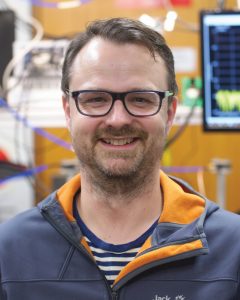 DR THOMAS VOLZ
DR THOMAS VOLZ
Associate Professor
Department of Physics and Astronomy, Macquarie University, Australia
FIELD OF RESEARCH: Quantum Optics, Quantum Engineering, Quantum Materials
RESEARCH PROJECT: Thomas is engaged in a variety of quantum research projects, typically involving quantum emitters and light. His studies will help understand various materials, their fundamental behaviours and suitability for a range of technological applications that will change the world.
FUNDERS: Australian Research Council Centre of Excellence for Engineered Quantum Systems (EQUS)
 DR THOMAS VOLZ
DR THOMAS VOLZ
Associate Professor
Department of Physics and Astronomy, Macquarie University, Australia
FIELD OF RESEARCH: Quantum Optics, Quantum Engineering, Quantum Materials
RESEARCH PROJECT: Thomas is engaged in a variety of quantum research projects, typically involving quantum emitters and light. His studies will help understand various materials, their fundamental behaviours and suitability for a range of technological applications that will change the world.
FUNDERS: Australian Research Council Centre of Excellence for Engineered Quantum Systems (EQUS)
ABOUT QMAPP
Thomas is Principal Investigator of the Quantum Materials and Applications Group (QMAPP), a group focused on research activities in quantum physics, nanotechnology and materials science. QMAPP is part of the Physics and Astronomy Department at Macquarie University and is composed of a small team of seasoned researchers, as well as early career researchers and students who are just starting out on their pathway.
WHAT FACILITIES DOES QMAPP HAVE ACCESS TO?
Given the nature of its scientific enquiries, it is vital that the team has access to state-of-the-art facilities. “We have a number of high-power, widely tunable, narrow-line width lasers for manipulating the quantum systems we are dealing with, as well as state-of- the-art single-photon detectors that are able to detect single photons with very high efficiency and with a few tens of picoseconds (1/1,000,000,000,000 seconds) time resolution,” explains Thomas. “We also have special, optically accessible fridges for carrying out experiments at helium temperatures, which are four degrees above absolute zero.”
HAVE THE TEAM AT QMAPP HAD ANY MAJOR ACHIEVEMENTS?
Yes! In 2019, they were able to report on a key scientific breakthrough, which was centred on the ‘emergence of quantum correlations from interacting fibre cavity polaritons’ and was published in Nature Materials. “The observation we reported on was predicted in 2006 and was (and still is) one of the key goals in the field of exciton polaritons. Essentially, we report on a way to create quantum light from semiconductor electron-hole pairs that does not require the presence of single quantum emitters in the material,” says Thomas. “I was personally thrilled by the outcome since this was a project I started working on when I was a postdoctoral researcher at ETH Zurich in Switzerland, back in 2009!”
The findings took ten years from inception to publication, but Thomas considers it to be one of the key achievements of his career so far. This highlights the hard work that goes into a scientific career and how perseverance leads to great things. That said, scientific discoveries are not the only significant achievement. Thomas alludes to the fact that the group dynamics at QMAPP are really good – collaboration and working alongside like-minded scientists is a perk of the job that you too could enjoy one day.
FIND OUT MORE ABOUT THOMAS
“My fascination with light and the use of light for doing experiments really came at university when I was able to work in a real lab and experience lasers first-hand. I was always fascinated by logic and rational argument as a kid – this then turned into a strong interest in both maths and physics. I almost ended up in theoretical physics but eventually settled on experimental quantum optics due to the close link between theory and experiment.
During my third year at university, I took a subject on ‘modern laser physics and its applications’ with my later PhD advisor Professor Gerhard Rempe. He ran an experimental group at the University of Konstanz in Germany and later became a Director at the Max-Planck Institute for Quantum Optics. He was one of the key figures in the emerging field of experimental quantum optics. In my experience, it is always the people you come in contact and work with who can have an enormous influence on your career.
The path to getting an academic job at a university or research institute is a long and hard one – there are not many jobs in academia and, so, securing such a job is a huge achievement. But I should also highlight that a lot of that achievement boils down to luck and meeting the right people along the way, i.e. simply being at the right place at the right time.
An academic career is full of failures and, with an experimental PhD, one experiences failures almost daily. In fact, during my studies and later in my PhD, I was told that it is all about building ‘frustration tolerance’! It takes the right mindset and a strong will to try again and again – a bit like Sisyphus in Greek mythology (or a steady batsman in a five-day test). But when ideas turn out to be correct, the challenging experiment finally works, the big grant application is accepted, and the paper gets printed in a top journal – these moments more than compensate for the many failed attempts.”
MEET LYRA
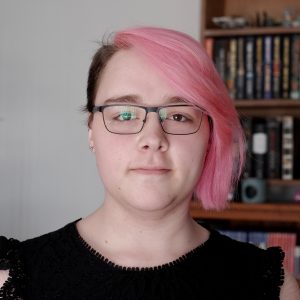
Lyra Cronin has just completed her Master of Research (MRes) degree, which means she was able to undertake her studies in quantum optics as part of the QMAPP team.
“I loved English and physics during high school. This was mainly because of the wonderful teachers I had. In my first year at university, I did both linguistics and physics subjects, and because of the experience studying physics, it made me more certain that this is the path I wanted to follow.
A large part of my motivation for working in this field is to make the world a better place. If by working steadily at research I can help further our understanding of the universe we live in, then there is no other way I would prefer to spend my time. My current work is focused on the development and exploration of a maser system. This is a laser that operates at microwave frequencies and is realised by using diamond. While masers have been around for decades, and are used commonly in deep space communication, GPS satellites and high accuracy timekeeping, the existing systems are inaccessible for most other fields due to their cost and operating requirements.
I finished my MRes programme at the end of 2020. I started the maser project during my MRes thesis and will continue working on the same project over the next few years as part of my PhD. This has been my goal for some time, and I am still not sure where I will go afterwards – but, whatever I do, I will want to continue doing research.
I would certainly encourage others to study physics and quantum optics. Little in my life has been as rewarding as conducting research and even though it can be difficult at times, I have never doubted that this is the right path for me. Even outside of academia and research, a background in quantum physics means you are incredibly well positioned to be at the forefront of a new industry.
I would also encourage women and people from underrepresented backgrounds to consider studying physics. In the past, physics has not been especially welcoming for many people, but this is changing rapidly thanks to the efforts of many within the field. Macquarie University, in particular, has been wonderful, and has come so far so quickly. There is an idea that quantum physics is particularly difficult, but it is not inherently more difficult than any other field of science. Anybody can pursue a career in quantum science if they want to.
If I could speak to my younger self, I would say that getting a PhD is possible. Throughout the early years of university, I struggled with severe depression – I had to stop studying for a year and try to recover. Even then I had to study part time for most of my undergraduate degree. During that time, I also came out as trans and began transitioning, which was not easy. Ultimately, even with these struggles, I have been able to get to where I wanted, and it has been one of the best periods of my life.”
HOW TO BECOME A QUANTUM SCIENTIST
• STEM Learning has a wealth of resources for those interested in quantum technology. Although many of the papers, on topics such as diffraction, cryptography and laser cooling, are designed for teachers to use, they can be accessed by anybody: https://www.stem.org.uk
• Forbes has put together six things we should all know about quantum physics. It is a fascinating read and should enable you to read around specific areas within the field: https://tinyurl.com/2sryvvu4
• There are so many different roles within quantum science that an estimated salary is difficult to provide. However, for a research scientist in quantum information science, the average salary is the equivalent of around AUS $100,000. It is worth noting that quantum physics is such a niche field, and one that will revolutionise the world before long, meaning that people with expertise and knowledge in this field will be highly sought after.
PATHWAY FROM SCHOOL TO QUANTUM SCIENCE
Thomas recommends students think about developing a broader range of skills other than simply focusing on maths and physics (which are essential to quantum science). It might be worth considering studying IT/programming and English, which will be useful for writing up your findings for publication.
You will need a degree in a relevant subject for postgraduate study such as mathematics and/or physics.
https://study.com/articles/quantum_physics_degree_programs_requirements.html
THOMAS’S TOP TIPS
01 There are a few key traits that are important for a career in science, such as curiosity and an ability to think logically. If you can develop those skills as soon as possible, it will stand you in good stead throughout your career.
02 Quantum science requires very good maths skills, particularly as physics is a quantitative science. Do everything you can to hone your understanding of maths and pay attention in class!
03 The ability to present in front of others and defend key arguments when questioned are important to succeed in science. In addition, excellent writing skills will enable successful grant and publication writing.
Write it in the comments box below and Thomas will get back to you. (Remember, researchers are very busy people, so you may have to wait a few days.)



